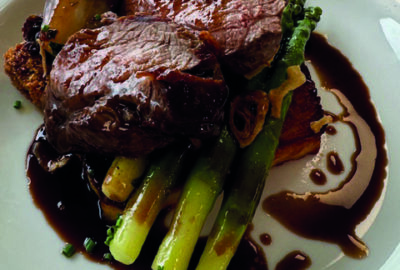It’s important for care home residents to receive the right balance of nutrients to meet their needs and support their health and wellbeing. This is crucial for some residents who may experience a lack of interest in food, a low appetite or difficulty eating.
Research studies have shown that dietary changes even later in life can make a difference.
Jenna Mosimann from the social enterprise, RaisingNutrition, who gave a presentation on the subject at an NACC forum, says, “I would encourage care home caterers to use as many whole, unprocessed fresh foods as possible as these tend to be more nutrient-rich, and to avoid or reduce ultra-processed foods and foods high in fat, sugar and salt. Review menus and ingredients and consider how you can adapt them. There are often simple ways to do this without affecting costs.”
Her suggestions include serving a more diverse range of vegetables, increasing wholegrains, reducing sugar content in cakes, adding pulses into meat dishes and offering more plant-rich meals.
In the case of residents who struggle to maintain their weight, instead of fortifying dishes by adding foods high in fat such as cream, a better approach is to use more nutrient-dense foods and those rich in healthier fats such as nuts and oily fish. Jenna adds “Sugary foods are often low in vitamins, minerals and fibre and can increase the risk of diseases such as dementia. They can also cause low moods due to blood sugar peaks and dives.”
Although some level of processed food is unavoidable, according to Jenna about 60% of the average UK diet is thought to be ultra-processed. Foods which have gone through industrial processing, have substances added, such as preservatives, and are far removed from their natural, grown state. “Research has shown significant associations between consumption of these foods and increased ill health. We would advise caterers to be more aware about the processing level of foods.”
Meals can be created using nutrient-dense foods, but if residents won’t eat them, they are not deriving the benefits. “The dining room at the care home needs to be inviting so that residents can be encouraged to enjoy eating,” says Jenna. A useful model to review the eating experience is the Five Aspects of Mealtimes Model (FAMM). The five aspects to review are the room, meeting (social interactions), the management, the product (the food served) and the atmosphere.
Jenna says, “Food that looks great and is full of flavour will be more appealing. There is no one approach that will work for everyone. A care home will need to trial different approaches such as serving food in front of residents so they have more input into what’s on their plate, encouraging carers to talk socially to residents over mealtimes, playing music, trying different lighting and using different types of cutlery and crockery.”
RaisingNutrition runs an accreditation programme for caterers, offering a framework to review food offerings and knowledge, as well as training, education and consultancy services.
Jenna says, “One care home that we’ve worked with added more fresh vegetables and moved away from carbohydrate-heavy “beige” meals. As a result, residents were more willing to try new foods and the catering team felt more engaged and motivated.” Find out more about RaisingNutrition, their challenge to our food systems and their aim to create a culture where genuinely healthy foods choices are highly valued, promoted and readily available.


